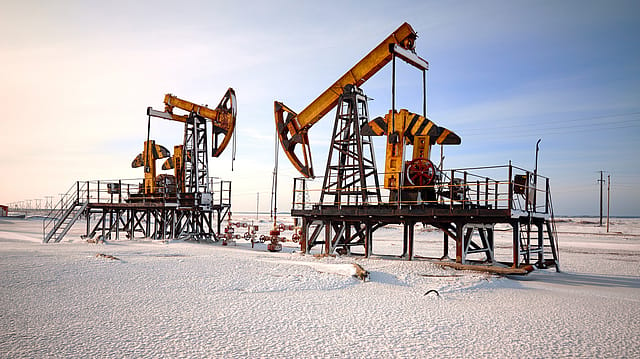Russian crude absorbs India's boiling inflation
ADVERTISEMENT

The discounted crude imported from Russia is helping India fend off inflation to a large extent. The country's retail inflation, as measured by the Consumer Price Index (CPI) declined to a 3-month low of 6.77% in October from 7.41% in September as Russia has become India's top oil supplier in October, surpassing traditional sellers Saudi Arabia and Iraq. The annual rate of inflation based on the Wholesale Price Index (WPI) also fell in October to 8.39% from a peak of 15.88% in May. WPI inflation was 10.7% in September and 13.83% in October 2021.
India gets Russian oil at a deep discount of around $15-20 a barrel. The Russian oil share in India's import basket has climbed to 22% in October from just 1% before the beginning of the Ukraine war. The share of India's traditional suppliers, Iraq and Saudi Arabia decreased to 20.5% and 16%, respectively.
The Indian government was left with no other option to contain the petroleum prices but to import discounted Russian crude. As the country follows decontrolled price regime for petrol and diesel, high transportation costs would have spiralled into price rise of essential commodities, resulting in escalation of inflation. The country's crude oil import bill surged 76% to $90.3 billion in the first half of this financial year even as the total import quantity increased by 15% to 116.6 million tonne (MT).
December 2025
The annual Fortune 500 India list, the definitive compendium of corporate performance, is out. This year, the cumulative revenue of the Fortune 500 India companies has breached $2 trillion for the first time. Plus, find out which are the Best B-schools in India.
The combination of elevated crude prices and persistent currency depreciation translates into higher inflation in many countries. In 2022, the Indian rupee slipped 10%, hitting a low of 83.29 against the US dollar on October 20.
RBI governor Shaktikanta Das recently compared the central bank's policy measures to target inflation with Arjuna from Mahabharata. "No one can match the prowess of Arjuna, but our constant endeavour is to keep an Arjuna's eye on inflation, which is our primary target," Das said. However, the government’s decision to continue importing discounted Russian crude made the life of RBI easy.
The G7 countries (Canada, France, Germany, Italy, Japan, the United Kingdom, the United States and the European Union) are working to cap the Russian crude price to limit Russia's revenues and ability to fund the war in Ukraine. A historical Russian Urals crude average of $63-64 a barrel could form an upper limit, the experts estimate. The cap is a concept promoted by the U.S. since the EU first laid out plans in May for an embargo on Russian oil to punish Moscow.
U.S. Treasury Secretary Janet Yellen recently said the U.S. is happy for India to continue buying as much Russian oil as it wants, including at prices above a G7-imposed price cap mechanism, if it steers clear of Western insurance, finance and maritime services bound by the cap. India is now Russia's largest oil customer other than China.
High crude prices will also have a direct impact on India's foreign exchange outgo and fiscal deficit as the country imports around 85% of its annual oil requirement. The country, which is the third largest crude oil importer and consumer, had reduced central taxes in the recent past to control the prices of petrol, diesel and LPG. The high fuel prices will escalate the cost of essential goods and affect consumer spending. It will in turn have a huge impact on the government's income from excise duty.
